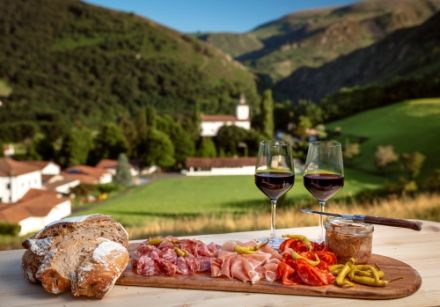 |
Basque Country > Some typical Basque charcuterie products
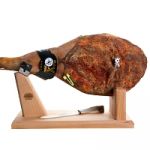
Catherine and Pierre Oteiza have reintroduced the Basque Kintoa pig, a symbol of Basque gastronomy, which obtained a protected designation in 2019. This black and white pig, raised outdoors, is distinguished by its piebald color and big floppy ears; it has tender, juicy, deep red meat, nicely marbled, which gives it a very characteristic robust flavor.
Kintoa ham is made according to an ancestral method, passed down through the generations by Basque farmers. Salted with a dry salt from "Bassin de l'Adour," it is cured in a natural drying shed for 18 to 22 months.
Gold medal in "Salon de l'Agriculture de Paris 2023"
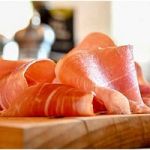
Ham from Les Aldudes Valley is salted with dry salt from "Bassin de l'Adour" and cured in a natural drying shed for between 10 and 14 months. The salting method, along with the long curing time and the southerly winds, give Aldudes Valley ham its unique taste.
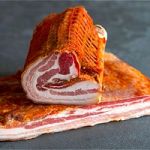
Flat or rolled, ventrèche or pork belly is salted with Bassin de l'Adour salt, dried for at least seven weeks, then rubbed with red Espelette pepper.
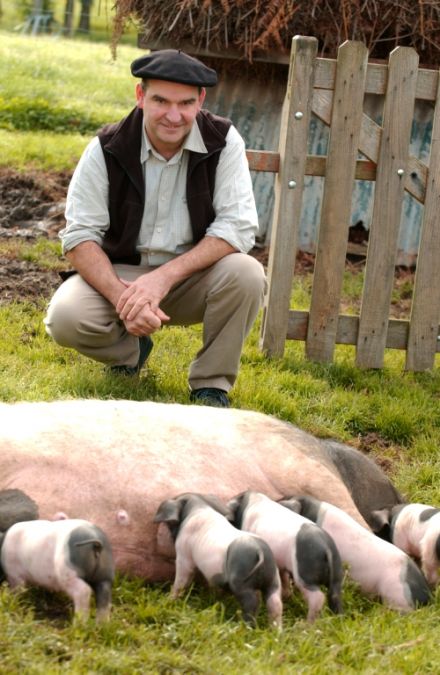
Photo above: OT Basque Country / Pierre Carton
Photo below: Pierre Oteiza with a Kintoa sow and her piglets in the maternity park Pierre Martinez + 3 small photos of ham and pork belly

-

 Recipes
Recipes
-

 Products
Products
-

 Entertaining
Entertaining
-

 Chefs
Chefs
-

 Hints & Tips
Hints & Tips
-

 Glossaries
Glossaries








